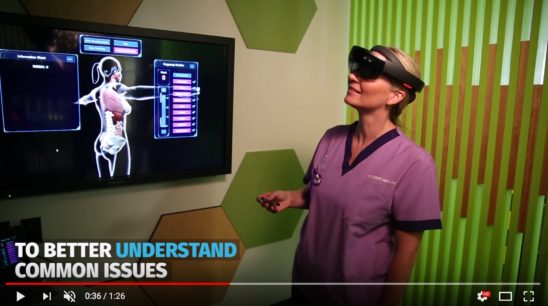This is the third of five posts reviewing developments in online learning during 2018. The first looked at AI and synchronous learning, and the second looked at open universities and open education. All are based on reflections of my work during 2018. I rated them as follows:
- the hype factor (as the ‘media’ see it)
- what I think is the significance for online learning
- level of engagement about the topic on the part of readers of my blog.
1 = low and 5 = high
Emerging technologies
As always there was more hype than reality in the actual applications of emerging technologies in 2018. The 2018 national survey of online learning indicated that while a range of new technologies is increasingly being used, the spread is relatively thin. In other words, a few instructors in most institutions are experimenting with new technologies, but nothing really took off in 2018.
For instance, quite a few instructors (and many more students) are using mobile phones in particular for teaching and learning purposes (55% of institutions in the 2018 national survey reported moderate to extensive use). However, apart from making quick and low cost videos with their phones by instructors, there has been no killer mobile app emerging in 2018, although no doubt a range of different apps are being used.
About a third of Canadian post-secondary institutions reported the use of simulations in their teaching.
The Open University indicated how useful learning analytics could be, but in this instance mainly to show the limitations of student ratings of the quality of courses. As with adaptive learning, less than 20% of Canadian institutions reported any significant use of learning analytics during 2018.
Nevertheless, actual usage today does not necessarily predict future usage. Two technologies really emerged for me during 2018 as having considerable potential for changing online learning and indeed, teaching generally, even if their use is currently very low.
Augmented and virtual reality
I came across several powerful examples of the potential of AR/VR in post-secondary education in 2018. In the Department of Chemistry at the University of Bristol in the U.K., Dr. David Glowacki and his team in their VR laboratory have created an interactive molecular dynamics modelling tool in the form of Nano Simbox VR, which allows anyone to visit and play within the invisible molecular world. The modelling tool is now freely available as an OER, so that any science department can use it to create a similar virtual experience of interacting with molecular structures.
At Emily Carr University of Art and Design in Vancouver, there are several developmental projects exploring the use of VR. movingstories is a SSHRC funded interdisciplinary, collaborative institutional research partnership leading to the design and application of more richly articulated human movement knowledge within digital technology interaction. Another application at ECUAD is using VR for remote drawing and painting through networking users in different locations to work in the same 3D environment, using publicly available technology.
The use of VR/AR to allow people to experience three-dimensional worlds in real time but in a safe environment has huge potential. However, it also requires careful assessment not only of its potential but also its costs, and in particular the ability to scale to a point where the cost of design and production can be justified.
This is where the combination of AR/VR and OER becomes critical. A lot of the development of AR/VR is being funded through research grants; a condition should be the sharing of the underlying software and designs that result. Tracking of costs and means to streamline design and production should be the focus in any new developments in this area.
However, the greatest challenge is imagination: how can these powerful tools best be used to transform teaching and learning? This is truly an exciting area to work in during 2019.
Hype: 5; significance: 3; reader engagement: 2
Serious games
Serious games – using gaming for educational purposes – was a technology in which I have shown little interest in the past, but during 2018 I noticed some really significant developments for post-secondary education.
A team at Ryerson University under the leadership of Naza Djafarova has been doing some serious research on serious games. Ryerson has already successfully developed game-based learning approaches in nursing and social work, and is now conducting research on best practices in serious games design. The Disruptive Media Lab at Coventry University in England has also been developing a range of approaches to serious games design.
The result of all this will be to standardize design processes and bring down the costs of serious games to a point where they will become feasible for more widespread use. Serious games indeed need not use flashy animation or even be online; they can be as simple as quizzes or card games. The basic premise is to make learning not only competitive and fun, but within an effective learning environment.
This research on serious games is still in its infancy, but I suspect that during 2019, its impact will become clearer.
Hype: 2; Significance: 4; Reader engagement: 2
Up next
Just two more posts to come in this series:
- weak leadership
- pedagogical developments
Then we can all take a break.










 Dr. Tony Bates is the author of eleven books in the field of online learning and distance education. He has provided consulting services specializing in training in the planning and management of online learning and distance education, working with over 40 organizations in 25 countries. Tony is a Research Associate with Contact North | Contact Nord, Ontario’s Distance Education & Training Network.
Dr. Tony Bates is the author of eleven books in the field of online learning and distance education. He has provided consulting services specializing in training in the planning and management of online learning and distance education, working with over 40 organizations in 25 countries. Tony is a Research Associate with Contact North | Contact Nord, Ontario’s Distance Education & Training Network.

